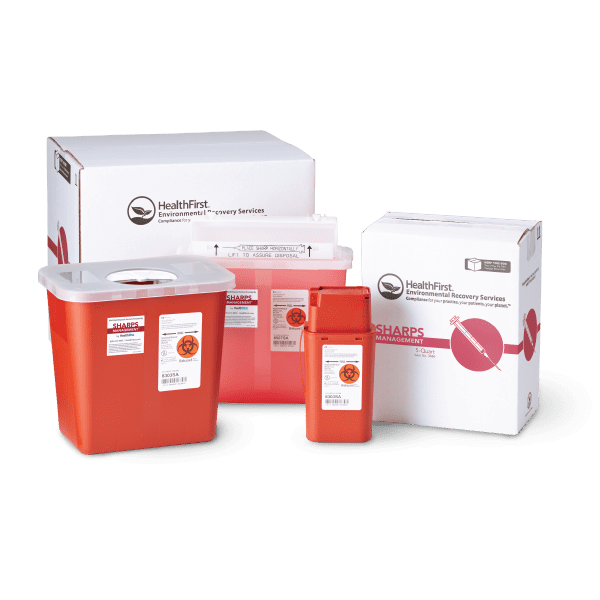Ecological Responsibility: The Eco-Friendly Approach to Medical Waste Disposal
Ecological Responsibility: The Eco-Friendly Approach to Medical Waste Disposal
Blog Article
Discovering Different Waste Disposal Options for a Cleaner Environment
In the pursuit of a cleaner environment, the monitoring of waste disposal has emerged as a crucial focal factor for sustainable development. With a plethora of waste disposal choices available, varying from traditional land fill techniques to innovative waste-to-energy modern technologies, the choice of just how we manage our waste has significant implications for our earth's well-being.
Recycling Methods
Applying efficient recycling methods is crucial in lessening waste and advertising sustainability in our setting. Reusing includes the procedure of transforming waste products into reusable things to avoid unnecessary disposal.
An additional vital recycling approach is composting, which entails breaking down organic waste like food scraps and lawn trimmings right into nutrient-rich dirt. This procedure not only diverts organic waste from garbage dumps however additionally creates a beneficial source for horticulture and agriculture. Furthermore, upcycling is an innovative recycling method that entails transforming old or disposed of materials into products of better or value. By integrating these different recycling methods into our waste monitoring practices, we can substantially decrease our ecological impact and move towards a much more sustainable future.

Composting Techniques
Reliable waste management methods, such as reusing methods, pave the method for a cleaner atmosphere, and currently, shifting the emphasis to 'Composting Techniques', we discover sustainable ways to decay organic waste for ecological benefit. medical waste removal service.
Composting is an all-natural procedure that changes organic waste, like food scraps and lawn trimmings, right into a nutrient-rich dirt amendment. The secret to effective composting depends on creating the best equilibrium of environment-friendly materials, such as fruit and vegetable scraps, and brown materials, like dried out branches and fallen leaves. These materials disintegrate with the assistance of microbes, damaging down the waste right into important compost.
There are numerous composting techniques available to suit various requirements. Typical yard composting entails layering natural products in a container or heap and frequently turning the mix to aerate it. Vermicomposting, on the other hand, uses worms to break down organic matter into compost (click here). For those with minimal room, indoor composting systems offer a practical option. By making use of composting techniques, we can reduce the amount of waste sent to landfills while creating a useful product for improving dirt and sustaining plant development.
Incineration Benefits And Drawbacks
Incineration, as a waste disposal approach, presents both benefits and disadvantages that warrant mindful consideration in the world of lasting waste management methods. On the favorable side, incineration can substantially lower the volume of waste, lessening the demand for landfill area and possibly lowering greenhouse gas exhausts.
Nevertheless, there are remarkable drawbacks to incineration. One major issue is the possible release of damaging toxins right into the air, such as dioxins, hefty metals, and particulate issue, which can have damaging effects on human health and the environment. Furthermore, the high initial financial investment and operational prices of incineration centers position economic difficulties, making it a much less cost-efficient alternative contrasted to other waste management methods. Mindful surveillance and law are vital to reduce these unfavorable effects and maximize the benefits of incineration as part of an extensive waste administration method.
Landfill Administration Methods
Garbage dumps play a critical duty in waste management and environmental preservation by providing a control system for the disposal of strong waste products. Reliable land fill administration strategies are important to reduce ecological impacts and ensure the long-lasting sustainability of these waste disposal sites. One key strategy is proper waste compaction to take full advantage of the use of available room within the land fill (click here). By compacting the waste, the volume is decreased, permitting even more waste to be accommodated over time.
In addition, the application of everyday cover practices is essential in decreasing smells, protecting against litter, and minimizing the destination of pests. Treatment the disposed waste at the end of every day helps to contain odors and avoid potential ecological contamination. Furthermore, the monitoring of garbage dump gas emissions and leachate degrees is crucial in guaranteeing that ecological requirements are met which any possible dangers to bordering environments are reduced.

Waste-to-Energy Technologies
Among the cutting-edge strategies to waste management involves using Waste-to-Energy technologies to convert solid waste into usable power resources. Waste-to-Energy (WtE) technologies include a series of procedures that aim to extract energy from waste materials through thermal, chemical, or organic methods. This conversion procedure not just minimizes the volume of waste that winds up in landfills but also generates beneficial energy resources such as electrical energy, warm, or biofuels.
There are a number of methods of Waste-to-Energy conversion, including gasification, pyrolysis, and incineration. Incineration involves burning waste at high temperature levels to create warm and electricity. Gasification transforms waste right into a syngas, which can be made use of for power generation or chemical manufacturing. Pyrolysis breaks down organic materials making use of high temperatures in the absence of oxygen, generating bio-oil, char, and gas.
Applying Waste-to-Energy innovations can help minimize environmental issues connected with traditional waste disposal techniques while concurrently giving a sustainable energy resource. Mindful consideration needs to be given to emissions control and making sure the sustainability of feedstock supplies for these innovations to be absolutely advantageous for a cleaner atmosphere.

Verdict
In conclusion, checking out different garbage disposal alternatives such as reusing, composting, incineration, land fill management, and waste-to-energy modern technologies is important for promoting a cleaner atmosphere - click here. Each approach has its own advantages and obstacles, but by making use of a mix of these methods, we can work towards minimizing the quantity of waste that finishes up in land fills and ultimately add to a more sustainable future for generations to come
With a wide range of waste disposal choices offered, varying from standard land fill approaches to ingenious waste-to-energy modern technologies, the selection of just how we manage our waste has far-ranging effects for our earth's wellness. medical waste removal near me.Incineration, as a waste disposal method, presents both advantages and downsides that merit cautious consideration in the realm of sustainable waste management practices.Landfills play an essential function in waste management and environmental preservation by giving a control system for the disposal of solid waste materials. By condensing the waste, click site the quantity is minimized, enabling for more waste to be suited over time
One of the cutting-edge techniques to throw away monitoring includes utilizing Waste-to-Energy technologies to transform strong waste into usable power resources.
Report this page